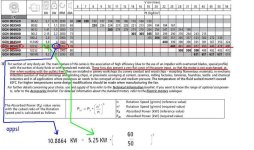Greg Dake
Member
Greetings,
I have a blower used for vacuum on a set of conveyors. The blower is currently on a starter and running at a fixed RPM. It was asked if I could put the blower on a VFD to run it a little faster if necessary. I wanted to find the performance curve of the blower to see if running it beyond 60HZ (3470RPM in this case) would give more vacuum, or possibly even less before adding the VFD. I don't work with blowers often.
I went to the manufacturer's website and found the information on the blower. It is a Cimme blower model GCH005020. I found the performance chart for the blower, but I cannot tell by looking at the chart what the effect RPM has on it's performance. The chart appears to be all about pressure, velocity, and horsepower. I have included some links below. I appreciate any input, since I don't work with blowers and I'm not sure I'm looking at the chart correctly.
PDF page 5:
http://www.cimme.it/pdf/cataloghi/CatGch0906-lk.pdf
Technical information on the blower:
http://www.cimme.it/pdf/cataloghi/InfTec0906-lk.pdf
Thanks in advance,
Greg
I have a blower used for vacuum on a set of conveyors. The blower is currently on a starter and running at a fixed RPM. It was asked if I could put the blower on a VFD to run it a little faster if necessary. I wanted to find the performance curve of the blower to see if running it beyond 60HZ (3470RPM in this case) would give more vacuum, or possibly even less before adding the VFD. I don't work with blowers often.
I went to the manufacturer's website and found the information on the blower. It is a Cimme blower model GCH005020. I found the performance chart for the blower, but I cannot tell by looking at the chart what the effect RPM has on it's performance. The chart appears to be all about pressure, velocity, and horsepower. I have included some links below. I appreciate any input, since I don't work with blowers and I'm not sure I'm looking at the chart correctly.
PDF page 5:
http://www.cimme.it/pdf/cataloghi/CatGch0906-lk.pdf
Technical information on the blower:
http://www.cimme.it/pdf/cataloghi/InfTec0906-lk.pdf
Thanks in advance,
Greg




